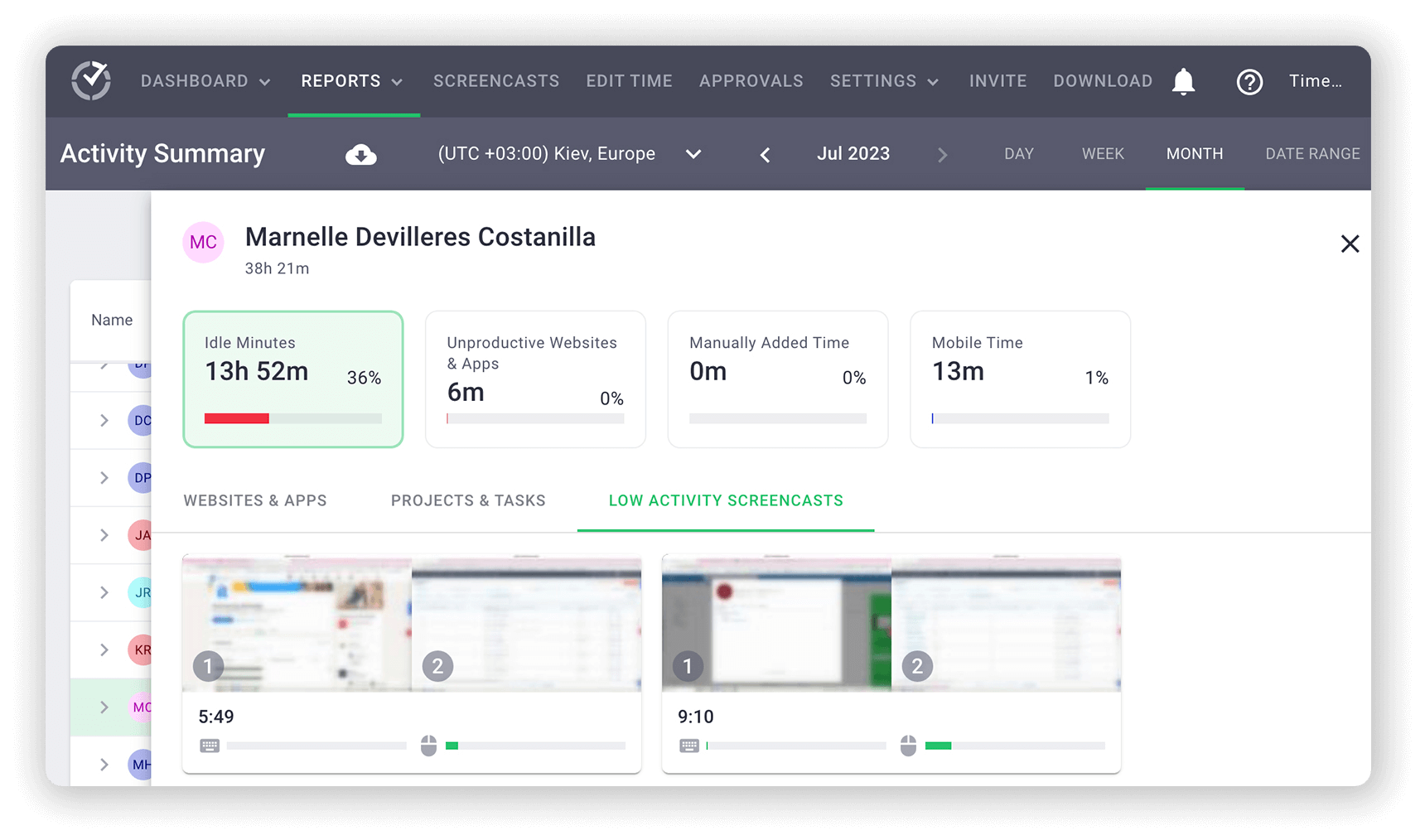88
Because more people are working from home, being overemployed is becoming more prevalent, which makes things harder for companies.
People are overemployed when they have more than one full-time job, often without telling their bosses about it. This can give workers financial security, but it also comes with a lot of risks for businesses.
To stay productive, follow moral standards, and make sure your online team works well, you need to be aware of and deal with the risks that come with overemployment.
Why overemployment is a concern for employers
Impact on productivity and quality of work
Employers are primarily concerned about the impact overemployment may have on productivity. When people have more than one full-time job, the quality of their work may suffer. This can make people rush through their work in their current job, miss deadlines, and do a worse job overall. This not only lowers the output of each person, but it can also mess up the way a team works, which can delay projects and make team members more likely to get burned out.
Ethical and legal implications
Overemployment raises significant ethical and legal issues. Many employment contracts include non-compete clauses or prohibit holding another full-time job. Violating these terms can lead to immediate termination and potential legal action. Additionally, misrepresenting one’s employment status undermines trust within the organization, damaging the work-life balance and the overall integrity of the team.
Security risks
Security is another critical concern when dealing with overemployed workers. Employees using company laptops or other resources for tasks related to a second job could inadvertently expose sensitive information. This risk is heightened if the second job is with a competitor, potentially leading to conflicts of interest and significant security breaches.
How to detect overemployed workers in your team
Monitoring performance and engagement
A decline in performance or engagement can be an early sign of overemployment. If a previously reliable employee starts missing deadlines, producing lower-quality work, or disengages from team activities, it might indicate they are burnout or juggling a second job. Regular check-ins and performance reviews can help identify these red flags early on.
Analyzing work patterns
Overemployed workers often exhibit unusual work patterns due to their need to manage multiple remote jobs. Frequent declines of meeting requests, distracted behavior during video calls, or citing personal emergencies regularly could indicate they are balancing more than one full-time role. Monitoring these patterns can help identify overemployed workers before their divided attention impacts the team.

Tracking the use of company resources
Overemployment can also be detected by tracking how company resources are used. Employees who use work equipment for non-work-related activities or access systems at odd hours might be working a second job. Clear policies on resource usage and regular reviews of access logs are essential in mitigating these risks.
Encouraging transparency
Fostering a transparent work culture is crucial in managing overemployment. Encourage employees to disclose any additional employment or side gigs. While some may hesitate to share this information, emphasizing the importance of transparency for maintaining trust and job security can lead to more honest conversations.
Managing and preventing overemployment
Clear employment contracts
Ensure that employment contracts explicitly state the company’s policy on holding multiple jobs. Include restrictions on working for competitors or taking on additional full-time jobs. This provides a legal foundation for action if conflicts arise and serves as a deterrent for potential overemployed workers.
Regular communication and check-ins
Consistent communication with your remote team is vital. Regular check-ins allow you to monitor workloads, offer support, and address any issues before they escalate. Open lines of communication also make it easier for employees to voice concerns, such as the stress of managing multiple jobs or dealing with the demands of the job market.
Implementing performance monitoring tools
Performance monitoring tools can provide insights into how employees spend their time during the workweek. While respecting privacy, these tools can track productivity metrics, such as time spent on projects or participation during work hours. This data can help identify potential overemployment without being overly intrusive.
How Time Doctor can detect overemployed workers

Time Doctor is an effective tool for identifying overemployed workers by tracking detailed work patterns. It monitors time spent on tasks, activity levels, and even captures screenshots, allowing employers to spot irregularities that may indicate an employee is juggling multiple jobs.
Customizable alerts can flag unusual behavior, such as logging in at odd hours or excessive idle time. By providing comprehensive reports and integrating with other tools, Time Doctor helps ensure employees are focused on their primary responsibilities, promoting transparency and preventing overemployment issues.
Conclusion
The rise of overemployment, particularly in the context of remote work, presents new challenges for companies. By understanding the risks and implementing strategies to detect and address overemployment, you can protect your business from decreased productivity, legal issues, and security threats.
Along with clear policies and regular communication, fostering an open and transparent culture will help your remote workers stay focused, productive, and aligned with your business goals.

Carlo Borja is the Content Marketing Manager of Time Doctor, a workforce analytics software for distributed teams. He is a remote work advocate, a father and a coffee junkie.


